Related Topics
Sixth and Walnut over to Broad and Sansom
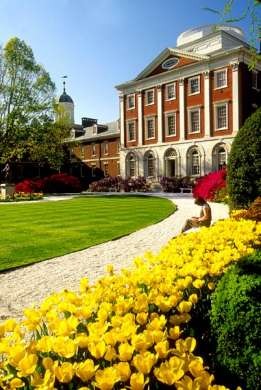 In 1751, the Pennsylvania Hospital at 8th and Spruce was 'way out in the country. Now it is in the center of a city, but the area still remains dominated by medical institutions.
In 1751, the Pennsylvania Hospital at 8th and Spruce was 'way out in the country. Now it is in the center of a city, but the area still remains dominated by medical institutions.
Education in Philadelphia
Taxes are too high, but the tax base is too small, so public education is underfunded. Drug use and lack of classroom discipline are also problems. Business and employed persons have fled the city, must be induced to return. Deteriorating education, rising taxes and crime are the immediate problems, but the underlying issue is lack of vigor and engagement by the urban population itself.
Pictures in the Library
On the walls of the Reading Room of the Academy of Natural Sciences in Philadelphia are 38 portraits of the most famous scientists of 19th Century America. Here are three of them.
Effingham Buckley Morris
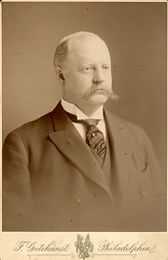
|
| Effingham Buckley Morris |
The vibrant chatter of schoolchildren is familiar at the Academy of Natural Sciences; its museum is a standard stop for local school trips and family outings. Effingham Buckley Morris, the president of the Academy from 1928 until his death in 1937, is largely to thank for the museum's youthful spirit. A giant of the Philadelphia banking community, Morris used his success in business as well as his connections to other local institutions to advance the Academy's outreach. In 1936, after conducting a comprehensive survey of the Academy's work, Morris and his associates announced the Educational Development Program. One goal was to create a specific Education Department, dedicated to educating children from local private and public schools. As Morris put it on the day of the Program's public unveiling, "We want a museum where ideas are on display rather than things." The Academy has certainly succeeded over the years in fulfilling Morris' ambitions.
Morris had quite a knack for inspiring people and institutions to think big and move in new directions. He was often quoted as having a unique ability to "enlist the loyal co-operation of his colleagues," garnering followers and supporters wherever he went.
A member of the well-known Quaker "Morris" family of Philadelphia, Effingham Buckley came from a long tradition of civic engagement. Effingham was born in the old Morris mansion on Eighth Street, the son of Israel Wistar Morris and Annis Morris Buckley. During his boyhood, he attended the Classical Academy of Dr. John W. Faires and then enrolled at the University of Pennsylvania for undergrad. It was at Penn that he began his long and illustrious career as a "leader," founding the College Boat Club and becoming one of the first presidents of the University Athletic Association. His popularity and vibrant spirit only grew as he established himself as an adult in the Philadelphia community. Although Digby Baltzell was later to immortalize a tradition of disdain for the diffidence and lack of distinction of Quaker-dominated Philadelphia, he certainly seems to have overlooked Effy Morris.
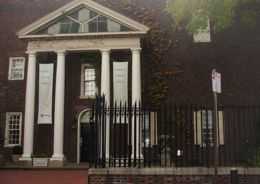
|
| Old Morris Mansion |
After receiving his graduate degree in Law from Penn, Morris worked exclusively in that field for several years. During this period of American expansion and economic growth, Morris was heavily involved in the booming railroad business throughout Pennsylvania, helping to settle deals during its various organizational forms. Because of its many mergers and acquisitions, a successful railroad mainly embodies a successful lawyer. During the long period when railroads were at the heart of the Philadelphia economy, a majority of railroad presidents were lawyers.
Perhaps the crowning achievement of Morris' career, however, was his wildly successful Presidency at the Girard Trust Company. One of his first moves as President was to set the company's important presence in stone through the construction of the Pantheon-esque Girard Trust Company building on Chestnut and Broad streets. Attached to this building, and now home to the Ritz Carlton hotel is a tall, impressive skyscraper that is also part of Morris' legacy. This white skyscraper had many critics during the days of its construction in 1888, but it was to become the first "office" building of its kind. Although the Witherspoon building at 13th and Chestnut makes the same sort of claim, the two Girard structures across the street still dominate the heart of the city today.
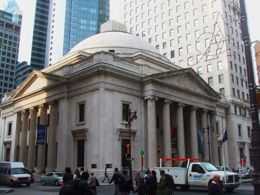
|
| Girard Trust Building |
During his career, Morris managed to become involved with a host of financial institutions in Philadelphia; he was the director of the Philadelphia National Bank, the Fourth Street National Bank, the Commercial Trust Company and a manager of the Philadelphia Saving Fund Society. He also became the trustee of large estates, including those of Anthony J. Drexel, and William Bingham.
Aside from his financial involvement in Philadelphia society, Morris was also an active member in its cultural societies. The Colonial Society of American, the Historical Society, and the Union League are just a few clubs of which Effingham Morris was a member. Morris also became a dedicated patron of the sciences, joining the board of the Wistar Institute of Anatomy and Biology and in 1928, donating to the Institute 150 acres of historic Pennsylvania land in Bucks County for the study of biology.
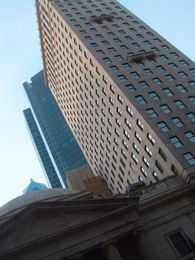
|
| New Ritz Carleton Hotel |
Effingham became a member of the Academy of Natural Sciences in 1896. He was later elected Chairman of the Finance Committee in 1905, then to the Board in 1925 where he was then elected president in 1928. Effingham approached his presidency with caution and modesty, aware of his limited knowledge in the scientific field and often enlisting the advice of his so-called "alter-ego," and the Academy's future president, Charles M. B. Cadwalader. Morris used his unique skills and local connections to help the Academy grow in new directions and expand its educational capacities.
Morris remained active until his death in 1937 and was, in no doubt, a dominant force in the development of Philadelphia and the improvement of its institutions. His portrait in the Academy's Library serves as a reminder of the Institution's deep and historical connections to the Philadelphia non-scientific community.
Originally published: Wednesday, November 24, 2010; most-recently modified: Monday, May 20, 2019